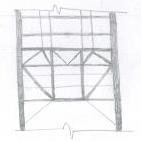-
Posts
475 -
Joined
-
Last visited
-
Days Won
242
Reputation Activity
-
 EngrUzair got a reaction from Aung Myat Thu in Which Books I Refer In Practical Feild
EngrUzair got a reaction from Aung Myat Thu in Which Books I Refer In Practical Feild
Assalam-o-alaikum!
Ok. Your structural engineering and field work should be as per the books and design codes you have been following during your engineering education.
In the structural engineering field, you would generally be required to understand and apply analysis and design concepts and procedures taught in various structural subjects, during your engineering education. Here, you will be involved in structural design of a variety of civil engineering structures, and in doing so will refer to various design codes.
Following thread will give you an idea about the design codes, generally being followed and referred for practical designing of civil works in Pakistan:
http://www.sepakistan.com/topic/1329-sefp-consistent-design/
For the structural design of various structural element (e.g., RC slabs, beams, columns, etc.), you would be following the design procedures given in your relevant (RC) design textbook, and the design code (e.g., ACI 318)
In the construction field, you would either be supervising construction work based on structural drawing prepared by some other structural engineer (as per above referred design codes), or prepare cost estimates for the same based on applicable schedule of prices. The basic field procedures used in the field work, are essentially similar to those taught in engineering universities in various construction related civil engineering subjects.
Regards.
-
 EngrUzair got a reaction from Aung Myat Thu in Which Books I Refer In Practical Feild
EngrUzair got a reaction from Aung Myat Thu in Which Books I Refer In Practical Feild
Assalam-o-alaikum!
Your question is somewhat unclear.
Before you can be properly advised, you should tell us what are you doing now-a-days? Are you an engineering student, or have completed some civil engineering degree? In which type of work or subjects you are more interested? Moreover, which test you are talking about?
Regards.
-
 EngrUzair got a reaction from Waqas Haider in Minimum Bearing Of Concrete Beam
EngrUzair got a reaction from Waqas Haider in Minimum Bearing Of Concrete Beam
Assalam-o-alaikum!
Check out Figures 1 & 2, pertaining to recommended one-way slabs and beam reinforcing details, in Part C 'Figures and Tables' of ACI 315-99 on pages 20 & 21 respectively. These figures are also available in .ACI Detailing Manual -2004 (SP66) on same page numbers.
Regards.
-
 EngrUzair got a reaction from khalid in Basic Technical Knowledge A Fresh Civil Engineer Should Have
EngrUzair got a reaction from khalid in Basic Technical Knowledge A Fresh Civil Engineer Should Have
Assalam-o-alaikum!
In the USA, no one can start working as an engineer, just by graduating from an accredited engineering university in civil (or some other) engineering discipline. Rather, each engineer has to pass a comprehensive examination, called Fundamentals of Engineering (FE) Exam, before he/she is eligible for joining some government or private consulting organizations as Engineering Intern (EI) or Engineer-in-Training (EIT), for gaining relevant professional experience to work as independent engineer later on.
This exam covers and reviews all the basic subjects, a freshly graduated engineer is expected to have studied in the university during the engineering education. The FE exam is a closed book exam, except that 'FE Reference handbook' (a standard booklet, developed by NCEES_ the exam developing and conducting organization), is the only source material the examinees may consult during the exam.
FE reference handbook gives a very good overview of the type and extent of basic technical knowledge (subjects, tables, formulas, equations etc) and concepts, a fresh graduate engineer (whether civil/structural, or any other) must have, to enter into practical engineering field in a technologically advanced country, like USA.
The study of 'Civil engineering' portion of this handbook and relevant 'exam specification' at the end, may help us understand level of engineering knowledge we should have, as well as the subject areas requiring improvement of knowledge and strengthening of concepts, in order to make us better engineers.
FE Reference Handbook may be downloaded from NCEES website,using following link, free of cost. :
http://ncees.org/exams/study-materials/download-fe-supplied-reference-handbook/
Note: You will have to enter your email address in the space provided on the above webpage, and to press 'Submit email' button. The site will send you a password on your given email address. You need to provide this password (on the above webpage) in order to obtain/unlock download link of the FE handbook.
Regards.
-
 EngrUzair got a reaction from Waqas Haider in Sefp Consistent Design
EngrUzair got a reaction from Waqas Haider in Sefp Consistent Design
Aoa,
Sir Umar!
Firstly, I totally agree with the idea of "Consistent Design", for the Pakistani Engineers.
BTW, What is the progress achieved on this idea so far?
Secondly, IMHO this idea of Consistent Design may be made even more useful, keeping in view following comments:
1. What I have understood from your post, your basic idea is limited to consistent design for UBC-97 and earthquake resistant design ONLY. IMO, this should extend to all other design types, based either on material (concrete, steel, wood etc) or the nature of loading (earthquake, wind, snow, etc) as well.
2. According to my knowledge, although in our country mostly US Design Codes are being used by private consultants or government departments, there is generally no consensus among the structural engineers as to which design codes (British or US) are to be adopted, even for common materials like concrete and steel. In this context, first of all we should decide a standard or 'Consistent' Structural Design Criteria for the proposed 'Consist Design'. This design criteria should include both 'Material design Codes' for the various structural materials (concrete, steel, wood etc) and the 'Loading Codes' (for dead, live, earthquake, wind, snow etc).
My recommendations regarding 'Consistent Structural Design Criteria', are as follows:
a. We should use US Material Design and Loading codes, being more advanced and progressive. And, also because our national building code, Building Code of Pakistan, is based on US codes.
b. In line with above recommendation, specific Material Design codes should be:
(1) ACI 318 for Reinforced Concrete Design
(2) AISC 360 for Structural Steel Design
(3) AISI for Cold-Formed Steel Design
c. Specific Loading codes should be:
(1) Building Code of Pakistan (Seismic Provisons-2007) and UBC-1997 for Earthquake (Seismic) Loads
(2) ASCE 7 for all other (Dead, Live, Wind, Snow) Loads
Thirdly, this is a very important and special topic. As such, it should be allotted a separate full forum, and all the relevant posts should be placed in this new forum.
Thanks.
-
 EngrUzair got a reaction from UmarMakhzumi in Which Books I Refer In Practical Feild
EngrUzair got a reaction from UmarMakhzumi in Which Books I Refer In Practical Feild
Assalam-o-alaikum!
Ok. Your structural engineering and field work should be as per the books and design codes you have been following during your engineering education.
In the structural engineering field, you would generally be required to understand and apply analysis and design concepts and procedures taught in various structural subjects, during your engineering education. Here, you will be involved in structural design of a variety of civil engineering structures, and in doing so will refer to various design codes.
Following thread will give you an idea about the design codes, generally being followed and referred for practical designing of civil works in Pakistan:
http://www.sepakistan.com/topic/1329-sefp-consistent-design/
For the structural design of various structural element (e.g., RC slabs, beams, columns, etc.), you would be following the design procedures given in your relevant (RC) design textbook, and the design code (e.g., ACI 318)
In the construction field, you would either be supervising construction work based on structural drawing prepared by some other structural engineer (as per above referred design codes), or prepare cost estimates for the same based on applicable schedule of prices. The basic field procedures used in the field work, are essentially similar to those taught in engineering universities in various construction related civil engineering subjects.
Regards.
-
 EngrUzair got a reaction from UmarMakhzumi in Which Books I Refer In Practical Feild
EngrUzair got a reaction from UmarMakhzumi in Which Books I Refer In Practical Feild
Assalam-o-alaikum!
Your question is somewhat unclear.
Before you can be properly advised, you should tell us what are you doing now-a-days? Are you an engineering student, or have completed some civil engineering degree? In which type of work or subjects you are more interested? Moreover, which test you are talking about?
Regards.
-
 EngrUzair got a reaction from Welchples in Concret Design Code Of Pakistan
EngrUzair got a reaction from Welchples in Concret Design Code Of Pakistan
Which design code should we use for the design of reinforced concrete structures in Pakistan? Which authority, law or rule directs to use this code?
-
 EngrUzair reacted to Syed Umair Haider in Development Length Of Standard Hooks
EngrUzair reacted to Syed Umair Haider in Development Length Of Standard Hooks
Waqas,
First note that development length in indicated case is only the straight length as shown in figure and doesn't include bent portion and secondly this requirement can be fulfilled as follows,
1,you can use greater no of lesser dia bars complying ldh requirement and if beam width is insufficient to accommodate greater no of bars then you can distribute them in effective flange width (ACI 318-11 section 10.6.6).
2. you can multiply ldh by 0.8 if you tie hooked end reinforcing bar with ties parallel or perpendicular to the bar, spaced not greater than 2db (db = hooked bar diametre).(ACI 318-11 figure R12.5.3).
3, You can provide excessive reinforcement and multiply ldh by As req/As prov.
4, You can multiply ldh by 0.7 by maintaining minimum side cover to the longitudinal bar to 2.5".
-
 EngrUzair got a reaction from Omer Ahmed in Shear Reinforcement In Etabs
EngrUzair got a reaction from Omer Ahmed in Shear Reinforcement In Etabs
Assalam-o-alaikum!
Shear reinforcement values indicated on the column member are generally the maximum values for the two shear axes, whether these are from on load combo or from two different load combos. Right-cIick on the member reinforcement diagram generally leads straight to load combo resulting in the maximum longitudinal or maximum shear reinforcement. However, as you have indicated, I am unsure, why this does not always happen. Surely, someone else might be able to explain this.
Interpretation of shear reinforcement value 'Av/s', given by ETABS, is not very difficult.
Since your units are 'kip-in", Av (i.e. cross-sectional area of ties) is in 'sq.in.' and s (i.e., spacing) in 'inches'.
For your case, Av/s = 0.045.
For 2-legged #3 ties, Av = 0.11x 2 = 0.22 sq. in.
Substitution of value of Av in above equation, results in required tie spacing, s = 0.22 / 0.045 = 4.88 in.
Regards.
-
 EngrUzair got a reaction from RASHEED in Will Appreciate Any Idea's/suggestions.(Help)
EngrUzair got a reaction from RASHEED in Will Appreciate Any Idea's/suggestions.(Help)
Assalam-o-alaikum!
Very well said, Sir Umar! I totally agree with that.
I personally missed the opportunity of working abroad after completion of masters from USA, being on scholarship and bound to come back to Pakistan after completion of education.
Regards.
-
 EngrUzair reacted to UmarMakhzumi in Will Appreciate Any Idea's/suggestions.(Help)
EngrUzair reacted to UmarMakhzumi in Will Appreciate Any Idea's/suggestions.(Help)
https://www.daad.de/de/is your gateway to Germany.
http://www.pk.emb-japan.go.jp/Education.htmlis your gateway to Japan.
And there are a lot more scholarships that can get you a foreign degree(like US Fulbright) but you will have to return home after your degree is completed. AIT offers a similar scholarship too. I would share with you what I thought and did when I was out of university.
After working for two years in Islamabad as a Structural Engineer, one thing that I was certain was that the usefulness of a foreign degree could not be maximized unless I have worked abroad as an engineer. I was also confused about to do a research thesis or just a degree program. Well, on one of the projects I did for USAID, I happened to meet Kazami Sahab(SMK Associates) and after discussing with him I went for a degree program and no-scholarship.
Today, I am glad that my understanding of working abroad was correct and I am also grateful to Kazmi Sahab for convincing me not to do a thesis program as that saved me 1.5 years of salary. I can tell you the you won't get the max out of your degree unless you have worked in a different and more robust environment than Pakistan. However, having said that if you go for a thesis or PHD, the challenges involved in the degree would open up your mind and help you take on things with a different approach.
Set your goals and go achieve them.
Good Luck.
-
 EngrUzair got a reaction from UmarMakhzumi in Will Appreciate Any Idea's/suggestions.(Help)
EngrUzair got a reaction from UmarMakhzumi in Will Appreciate Any Idea's/suggestions.(Help)
Assalam-o-alaikum!
All of the courses and other relevant material (formulas, tables etc) you have mentioned in your post, are necessary for your professional development. Which of them you will actually use in your professional life, will depend upon nature of practical problems you will come across and have to find solutions thereof. In general, you will need and use them, MUCH MORE in STRUCTURAL ENGINEERING, than in any other field of civil engineering.
As regards planning to do masters from and working abroad, IMHO you may obtain sufficient information from the internet, about the scope of civil engineers not only in Australia, but in other advanced countries (like USA and Germany etc.) as well. And, it will probably help you select a better option if you check your prospects in more than one country, and make your final decision keeping in view advantages and disadvantages in each case.
Regards.
-
 EngrUzair got a reaction from Waqas Haider in Will Appreciate Any Idea's/suggestions.(Help)
EngrUzair got a reaction from Waqas Haider in Will Appreciate Any Idea's/suggestions.(Help)
Assalam-o-alaikum!
All of the courses and other relevant material (formulas, tables etc) you have mentioned in your post, are necessary for your professional development. Which of them you will actually use in your professional life, will depend upon nature of practical problems you will come across and have to find solutions thereof. In general, you will need and use them, MUCH MORE in STRUCTURAL ENGINEERING, than in any other field of civil engineering.
As regards planning to do masters from and working abroad, IMHO you may obtain sufficient information from the internet, about the scope of civil engineers not only in Australia, but in other advanced countries (like USA and Germany etc.) as well. And, it will probably help you select a better option if you check your prospects in more than one country, and make your final decision keeping in view advantages and disadvantages in each case.
Regards.
-
 EngrUzair got a reaction from Badar (BAZ) in Minimum Compressive Strength For Concrete Seismic Design
EngrUzair got a reaction from Badar (BAZ) in Minimum Compressive Strength For Concrete Seismic Design
Assalam-o-alaikum!
Umair is right. According to ACI 318-11 Section 21.1.4.1, the requirements of section 21.1.4 apply to special moment frames, special structural walls and all components of special structural walls, including coupling beams and wall piers.
Since slabs and footings are not mentioned, probably 2500 psi concrete (minimum as per ACI section 1.1.1) may be used for these elements.
However, according to ACI section 4.1.1, minimum value of specified concrete compressive (fc′) shall be the greatest of the values required by following three criteria:
a. ACI section 1.1.1 requirement i.e., 2500 psi minimum
b. Requirement for durability, as per ACI Chapter 4, and
c. Actual requirement, from structural strength point of view
As such, most likely 3000psi may be likely choice in many cases. On the other hand, use of 2500 psi and 3000psi concrete for most of the small scale projects might not result in appreciable saving in the project cost. From construction point of view also, it will generally be time saving and preferable to use concrete of one compressive strength, as compared to the opposite.
Regards.
-
 EngrUzair got a reaction from Juli in Shear Reinforcement In Etabs
EngrUzair got a reaction from Juli in Shear Reinforcement In Etabs
Assalam-o-alaikum!
Shear reinforcement values indicated on the column member are generally the maximum values for the two shear axes, whether these are from on load combo or from two different load combos. Right-cIick on the member reinforcement diagram generally leads straight to load combo resulting in the maximum longitudinal or maximum shear reinforcement. However, as you have indicated, I am unsure, why this does not always happen. Surely, someone else might be able to explain this.
Interpretation of shear reinforcement value 'Av/s', given by ETABS, is not very difficult.
Since your units are 'kip-in", Av (i.e. cross-sectional area of ties) is in 'sq.in.' and s (i.e., spacing) in 'inches'.
For your case, Av/s = 0.045.
For 2-legged #3 ties, Av = 0.11x 2 = 0.22 sq. in.
Substitution of value of Av in above equation, results in required tie spacing, s = 0.22 / 0.045 = 4.88 in.
Regards.
-
 EngrUzair reacted to UmarMakhzumi in Property Modifiers For Retaining Walls
EngrUzair reacted to UmarMakhzumi in Property Modifiers For Retaining Walls
I would use the ground floor as base for seismic loads instead of basement. The reason is that the combination of ground floor diaphragm and perimeter basement wall offers a very rigid system. This statement would be true for buildings with 1 or 2 underground stories. If you have got more stories than a separate analysis for sub structure and superstructure should be done.
The above quoted rule is based on my own personal experience. You should ensure that all limit states are satisfied and do your due diligence. I am keeping things as simple as could be kept while replying. Please have a look at the attached documents that explain some aspects about subject thread.
Basement Wall with Seismic Earth Pressure.pdf
Seismic Performance Of Structures with Underground Stories.pdf
Thanks.
-
 EngrUzair got a reaction from Waqas Haider in Minimum Compressive Strength For Concrete Seismic Design
EngrUzair got a reaction from Waqas Haider in Minimum Compressive Strength For Concrete Seismic Design
Assalam-o-alaikum!
Umair is right. According to ACI 318-11 Section 21.1.4.1, the requirements of section 21.1.4 apply to special moment frames, special structural walls and all components of special structural walls, including coupling beams and wall piers.
Since slabs and footings are not mentioned, probably 2500 psi concrete (minimum as per ACI section 1.1.1) may be used for these elements.
However, according to ACI section 4.1.1, minimum value of specified concrete compressive (fc′) shall be the greatest of the values required by following three criteria:
a. ACI section 1.1.1 requirement i.e., 2500 psi minimum
b. Requirement for durability, as per ACI Chapter 4, and
c. Actual requirement, from structural strength point of view
As such, most likely 3000psi may be likely choice in many cases. On the other hand, use of 2500 psi and 3000psi concrete for most of the small scale projects might not result in appreciable saving in the project cost. From construction point of view also, it will generally be time saving and preferable to use concrete of one compressive strength, as compared to the opposite.
Regards.
-
 EngrUzair got a reaction from UmarMakhzumi in Minimum Compressive Strength For Concrete Seismic Design
EngrUzair got a reaction from UmarMakhzumi in Minimum Compressive Strength For Concrete Seismic Design
Assalam-o-alaikum!
Umair is right. According to ACI 318-11 Section 21.1.4.1, the requirements of section 21.1.4 apply to special moment frames, special structural walls and all components of special structural walls, including coupling beams and wall piers.
Since slabs and footings are not mentioned, probably 2500 psi concrete (minimum as per ACI section 1.1.1) may be used for these elements.
However, according to ACI section 4.1.1, minimum value of specified concrete compressive (fc′) shall be the greatest of the values required by following three criteria:
a. ACI section 1.1.1 requirement i.e., 2500 psi minimum
b. Requirement for durability, as per ACI Chapter 4, and
c. Actual requirement, from structural strength point of view
As such, most likely 3000psi may be likely choice in many cases. On the other hand, use of 2500 psi and 3000psi concrete for most of the small scale projects might not result in appreciable saving in the project cost. From construction point of view also, it will generally be time saving and preferable to use concrete of one compressive strength, as compared to the opposite.
Regards.
-
 EngrUzair got a reaction from Waqas Haider in Near Source Factors For Quetta
EngrUzair got a reaction from Waqas Haider in Near Source Factors For Quetta
Aoa.
In case you get some useful data, please do share at this forum for the benefit of all of us.
Thanks.
-
 EngrUzair got a reaction from UmarMakhzumi in Near Source Factors For Quetta
EngrUzair got a reaction from UmarMakhzumi in Near Source Factors For Quetta
Aoa.
As you might be aware, information about Near Source Factors (NSF) for calculation of seismic loads, is given in UBC-1997 Tables 16-S, 16-T and 16-U.
Main parameters required to select appropriate NSF are 'the closest distance to nearby seismic source' in km, and 'seismic source type' (A, B, or C). Realistic values for both these parameters for Quetta may possibly be obtained from National Seismic Monitoring Centre of Pakistan Met Department (http://www.pmdnmcc.net/), Karachi. Geological Survey of America (USGS) may also have this type of data.
BTW...... Two years ago, when I was involved in the structural design of a hospital building at Quetta, (in absence of some authenticated data) I had used the closest distance to seismic source as 15 kms, and source type as A.
Regards.
-
 EngrUzair got a reaction from UmarMakhzumi in Near Source Factors For Quetta
EngrUzair got a reaction from UmarMakhzumi in Near Source Factors For Quetta
Aoa.
In case you get some useful data, please do share at this forum for the benefit of all of us.
Thanks.
-
 EngrUzair got a reaction from Waqas Haider in Near Source Factors For Quetta
EngrUzair got a reaction from Waqas Haider in Near Source Factors For Quetta
Aoa.
As you might be aware, information about Near Source Factors (NSF) for calculation of seismic loads, is given in UBC-1997 Tables 16-S, 16-T and 16-U.
Main parameters required to select appropriate NSF are 'the closest distance to nearby seismic source' in km, and 'seismic source type' (A, B, or C). Realistic values for both these parameters for Quetta may possibly be obtained from National Seismic Monitoring Centre of Pakistan Met Department (http://www.pmdnmcc.net/), Karachi. Geological Survey of America (USGS) may also have this type of data.
BTW...... Two years ago, when I was involved in the structural design of a hospital building at Quetta, (in absence of some authenticated data) I had used the closest distance to seismic source as 15 kms, and source type as A.
Regards.
-
 EngrUzair got a reaction from RASHEED in Will Appreciate Any Idea's/suggestions.(Help)
EngrUzair got a reaction from RASHEED in Will Appreciate Any Idea's/suggestions.(Help)
Aoa.
I agree with Waqas in that a structural engineering student must focus on LEARNING THE BASIC STRUCTURAL CONCEPTS. And, this should be his/her prime goal.
As far as learning of software is concerned, although these are good tools for a structural engineer, IMHO a good structural engineer MUST be able to solve most of design and analysis problem MANUALLY (i.e., by hand calculation), BEFORE he learns to solve them using some software.
The reason is that in solving many type of structural problems, faced in the field, you might neither have any software available, nor time to develop one to tackle the situation. Moreover, structural software are generally very costly as well. Resultantly, you will get stuck up somewhere, especially for situations you have no software. However, if you have good structural concepts, and have learnt the art of solving structural problems THROUGH HAND CALCULATIONS, you will be a much more efficient and good structural engineer in future.
I, therefore, recommend that Chokehold, and other similar fellows studying in various engineering universities, must focus a lot on their studies during education, keeping in view above points, in order to have developed basic skills necessary for becoming a good structural engineer on completion of their education.
Structural and other computer software should definitely be learnt by the engineer, but only with a view to augment basic engineering knowledge and to speed-up the design work.
Regards.
-
 EngrUzair got a reaction from WR1 in Building Drifts In Etabs
EngrUzair got a reaction from WR1 in Building Drifts In Etabs
Aoa.
Good work, moderators.
Rana!
Probably, link to original website requires updation too.
BTW... When is your book completing?



.thumb.jpg.700916fbc7ead330085e15745d0270bd.jpg)





